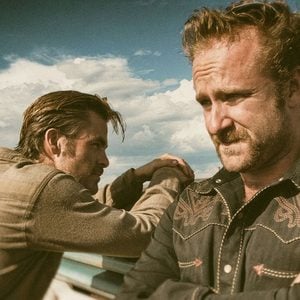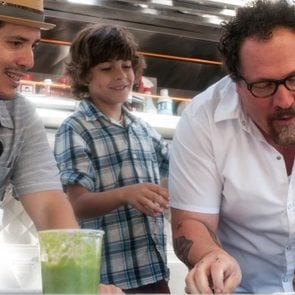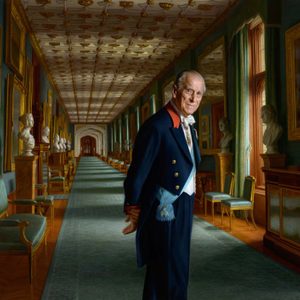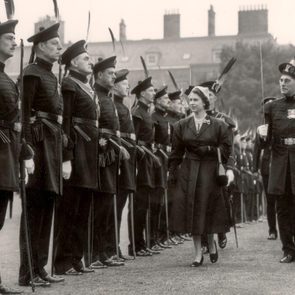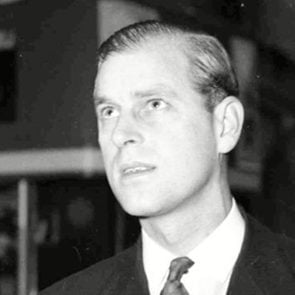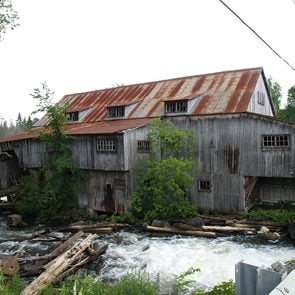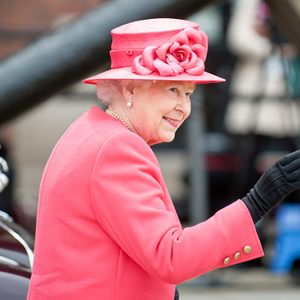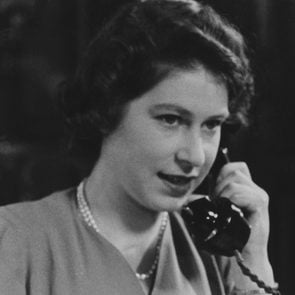Let’s be real: Netflix (and every other streaming service) kept us from going totally bonkers over the past year. With amazing shows like the return of Supermarket Sweep and Michelle Obama’s adorable kids show Waffles + Mochi, it’s easy to get lost in the long list of available shows.
Now it’s time to prepare for something a little different. Last year, Meghan Markle and Prince Harry announced their partnership with Netflix. Their aim was to create content that invoked inspiration and hope—two things we can never have enough of! Now, they’ve announced their first official docuseries, Heart of Invictus.
What Will the Show Be About?
The show will focus on the competitors of the future Invictus Games, which were pushed back from 2020 to 2022. Prince Harry, the Duke of Sussex, launched the international Invictus Games back in 2014 as a way to help wounded servicemen and women physically, mentally and emotionally through sports. After seeing the Warrior Games, a similar event held by the United States Department of Defense, the Duke knew he wanted to bring the idea back to the UK.
According to a press release on the Invictus Games site, “The multi-episode series will join the competitors as they train, and along the way reveal powerful stories of resilience and hope. The series will also follow the organizers as they work to prepare for the Games, postponed until next spring, and as they partner with each nation’s team to support their competitors over the coming year.”
Meagan and Harry’s company, Archewell Productions, will produce the series specifically for Netflix.
When Can We Expect to See It?
There’s currently no set date since Megan and Harry just made the announcement. But, hopefully, we can expect to watch the show sometime before the 2022 Invictus Games. And for those wondering, yes, Prince Harry will have some quality screen time. Keep your eyes and ears peeled for more about an upcoming release date!
Next, check out the best half-hour shows on Netflix Canada to watch right now.
Originally published in Reader’s Digest (US), 1966:
It is a safe bet that when His Royal Highness Prince Philip—Duke of Edinburgh, Earl of Merioneth, Baron Greenwich, Knight of the Garter and of the Thistle—visits the United States this March, neither resounding titles nor closeness to the British throne will affect his impact as an individual. He is, in his own right, one of the most stimulating, able, outspoken and controversial figures on the world stage today. And he comes here to do a characteristic job: as guest of Variety Clubs International, a show-business organization that has raised more than go million dollars for sick and crippled children, he will prosper this humanitarian cause via speeches and visits to hospitals and research centres from coast to coast.
The easy manner, the debonair appearance, convey only a fraction of the very human being who, nearly 45 years ago, cropped up on a 1,000-year-old family tree cross-fertilized by Europe’s noblest blood strains. Born a Greek prince on the island of Corfu, he has no Greek blood but bears a royal heritage from both Queen Victoria of England and Christian IX of Denmark. From the Mountbatten side (his uncle, Victoria’s great-grandson, is the redoubtable Earl Mountbatten of Burma) come brains, looks, personality, versatility and a pile-driving ambition to excel. At Gordonstoun School in Scotland, and later at Dartmouth Naval College, he ranked high in his class and was a champion athlete. At 19, he was cited for performance in battle action, later skippered one of the most efficient ships in the Mediterranean Fleet, rose to the rank of commander at the precocious age of 31.
To compensate for such rich endowment, he has the normal share of human weaknesses. He is occasionally given to “moods,” and he can be short-tempered, abrupt to the point of rudeness. Brought up almost entirely by males, he is unsentimental to a degree (baby talk and name diminutives are unknown at Buckingham Palace), undemonstrative and offhand. Yet there is also an informality, a compulsive gravitation to the amusing side of things. When the Queen rested briefly in the chapel following the Coronation, Philip, pointing to the imperial state crown on her head, whispered, “Where did you get that hat?”

Out of the Red Plush
But for some thinning of his plastered-down blond hair, the Prince is little changed physically from the tall (six-foot-two), lithe Lieutenant Mountbatten of the 1947 wedding pictures, standing chin tilted, hands clasped behind, a habit which continues. At an age when most contemporaries are loosening belts, he retains a schoolboy figure and moves like the peak-conditioned athlete that he is. Only his steel-blue eyes and his mouth, prone to a tight smile when irritated, reveal that little is left of the carefree, unsophisticated mid-shipman who back in 1939 aroused the admiration of a bashful 13-year- old named Elizabeth, daughter of King George VI.
Britain has never been more in need of some catalyst with revitalizing vision and leadership than in the dog-eat-dog years that have followed World War II. Never was there a prince more stubbornly determined to serve her meaningfully. His travels to the far reaches of five continents have been a boon to Britain; they have strengthened ties and, to lonely people in lands resigned to being overlooked, emphasized the crown’s intimate preoccupation with their welfare.
Philip’s most remarkable achievement, however, is that, almost single-handed, he has succeeded in detaching the British crown from the immemorial aloofness of its red-plush frame, and without sacrificing an atom of its dignity. Today it stands as the symbol of a young and vibrant force, attuned to the heartbeat of a Commonwealth numbering more than 700 million people.

On the Run
The princely energy is next to inexhaustible, which is fortunate considering his range of interests and nightmare number of day-by-day engagements. These are drawn up regularly on big cardboard sheets in a colour-coded mosaic. Should you ask him for dinner, should he be eager to accept, the first free date he could give you would be three months hence.
Ill or well, tired or spry, he must keep each engagement on the dot or disappoint hundreds, sometimes thousands, of people. Far from keeping down his work load, however, Philip is forever adding to it. If a free hour shows up on the agenda, he probes compulsively for a stop-gap—a quick visit to a community playground, an industrial centre, to London’s Wool Exchange to brief himself on the newest techniques. Occasionally he will let off steam in a game of polo, thundering his mounts across the field like battering rams. “It isn’t his cars he drives too fast,” said an observer. “It’s himself.”
The day begins at 8 a.m., ends around midnight, and may involve hundreds of miles of travel. Should he arrive at a destination ahead of guests and welcoming committees, he zeroes in on anybody handy—bricklayer, accountant, janitor. Few are better informed than he on what the man in the street is thinking.
When speeches are indicated, the Prince painstakingly researches his own material, writes his own scripts, frequently delivers them from memory. A light touch, crisp diction and that midnight-oil knowledge of his subject have made him one of the most sought-after speakers in the Commonwealth. Diehards may assail his subject matter as “inappropriate” or “ill-advised,” but in the 19 years of his marriage to Queen Elizabeth no one has accused the Prince of being dull.
He is seldom at a loss for the right word. At one meeting, when a man thrust his Ph.D. wife forward, explaining, “She’s much more important than I am,” Philip replied kindly, “We have the same problem in our family.”

Shot in the Arm
While a sovereign’s duties have been meticulously blueprinted down the ages, a male consort has no constitutional function and, aside from siring heirs, no assigned responsibilities. Traditionally, his power to act and speak has been hedged by unwritten don’ts: don’t butt into state affairs or anything controversial; don’t try to influence the Queen; don’t move from the background; don’t rise above a rubber stamp.
It says much for Prince Philip’s resourcefulness that he has managed to convert this negative status into so many positive, action-packed endeavours. He has invested the consort role with purpose, and has made himself Britain’s No. 1 shot in the arm in widely separated fields.
British industry is immeasurably in his debt. The “scepter’d isle” has been slow to face the fact that modern competition poses a paralyzing threat; that handcrafted luxuries, styles and designs from Edwardian times have ceased to rule the trade waves. The Prince has been hailed as Britain’s “most valuable single asset,” for he is revitalizing her will to fight back for lost markets, helping to reawaken the genius of inyentors, scientists and researchers. “It’s no good,” he has said, “shutting your eyes and saying, ‘British is best!’ and expecting it to be so.”

Do-It-Yourself
Philip does more than merely talk recovery; he involves himself in plans and enterprises. Among the more than 45 organizations that he heads is the Council of Industrial Design. The Council’s seal of approval has triggered experimental daring among young designers. The Prince keeps track of (sometimes tests personally) each uncommon item—a new-fangled push-bike powered by mini-wheels; fireproof textiles; built-for-the-ages airplane luggage.
Not for Philip the conventional royal reflex—“Most interesting!” “Very praiseworthy!”—as eyes rove blankly over incomprehensible machinery during official visits. Aided by long experience and an abnormal curiosity concerning what makes anything tick, he has developed an almost surgical approach to modern processes and problems, large and small.
He has been known to unnerve chauffeurs, unaccustomed to royal do-it-yourselfers, by peeling off his coat and figuring out what ails the motor. He has lent furniture movers a hand, learning the professional way of shifting loads. He is an expert airplane pilot, with 1,500 hours of flying time to his credit. He is also a certified ship’s stoker, a distinction earned when, following a below-decks walkout aboard a wartime troopship, he volunteered for coal-shovelling duty. He stuck it out, shift by sweltering shift, from Puerto Rico to Newport News.

Youth and Conservation
Tens of thousands of young people look on Philip as their special property. Genuinely fond of youngsters, he has for years infected British teenagers with an awareness of oncoming responsibility. His Duke of Edinburgh’s Award Scheme is beamed at boys and girls, age 14-20, who are at loose ends. Headed by Sir John Hunt, hero of Mt. Everest, activated by voluntary committees all over the country and in many Commonwealth countries, the Scheme encourages public service, hobbies, fitness and expeditions. Self-reliance is the keynote. Some 130,000 young people have won awards.
As president of the National Playing Fields Association, Philip has set as his goal playgrounds not more than 500 yards apart in built-up areas, six acres or more of recreational space for every 1,000 inhabitants. His fund-raising campaigns have succeeded in increasing elbow-room to the extent of 2,124 football fields, 1,700 cricket grounds, 2,058 tennis courts, plus innumerable gyms, field houses and parks. His promise to “go anywhere to open a new playground” has been kept.
The worldwide despoiling of animal wildlife provoked Prince Philip into accepting the British presidency of the World Wildlife Fund. An ardent bird watcher, Philip has gone so far as to make cats non grata at Buckingham Palace.
To help launch America’s World Wildlife Fund some years ago, he interrupted a Vancouver-London flight to speak at a New York City dinner. After documenting the plight of game in faraway jungles, he let fly, “In case you’re feeling a bit smug, let me remind you that the passenger pigeons that once darkened your skies and the bison that covered your plains have been callously exterminated, and that even the bald eagle, proud emblem of this mighty country, is being chased and killed from airplanes by people who think it is smart to have its feathers and claws.”

Polished Performance
The activity in which the public usually visualizes royalty is the formal occasion—an endless round of banquets, tree plantings, cornerstone layings, openings of charitable institutions, agricultural and industrial shows, presentations of honours and awards. These appearances are all-important because they demonstrate the crown’s unwavering interest in the nation’s life.
Most thrilling are the red-carpet affairs attended by heads of state, diplomats, top military brass. Whether Philip participates simply as the Queen’s escort (as at the opening of Parliament) or alone as her official representative abroad, the form is equally rigid. It calls for a sartorially resplendent Prince in full-dress uniform, agleam with decorations. His bearing, grace and elegance will reflect the pride and dignity of Britain.
Oddly enough, the informal Prince, who brushes aside door-opening footmen with a brusque, “I’ve got arms, I’m not helpless,” adapts well to these regimented functions. Like the Queen, he carefully observes protocol, as well as the code of politeness which prescribes that a consort must always stand a pace or two behind the Sovereign.
Alone or together, the royal pair take immense pride in giving a polished performance. Royal fluffts are rare—none since that distant day when the Prince appeared in the wrong uniform for a parade. Even as he chats affably with a welcoming committee, Philip’s quarterdeck eye will be noting the layout. It will be his toe that nudges back a chair informally lined up with Her Majesty’s. He checks if microphones are too high, lights too blinding, photographers too close. Always a step or two behind, telepathically aware of Elizabeth’s requirements, he may point out some feature that she missed, adroitly disengage her from a bore, detain the reception line with some gay pleasantry if she is crowded. His unobtrusive support is so constant that a veteran, steeped in five reigns of the red-carpet routines, recently remarked, “Can’t think how we ever got along without him.”

Family Man
The law that an Englishman’s home is his castle applies mainly to those not inhabiting castles. The public has a ravenous interest in the First Family’s home life, and Prince Philip must battle to reserve this area. Reporters gather backstairs gossip from vendeuses (who reveal that young Prince Andrew tried on his mother’s hats during a fitting), from footmen (who collided with royal tricycles in sacrosanct state apartments), from tradesmen in pubs.
The family circle, a lively, well-adjusted one, means much to Philip, who as a boy was shunted from relative to relative. He is a casual but faithful and devoted husband; his unpredictable compliments and endearments still make the Queen’s eyes shine with pleasure. He takes pride in their four children (Charles, 17; Anne, 15; Andrew, 6; Edward, almost 2), and lets nothing interfere with the time set aside daily for their companionship. He delights in teaching them to ride, groom their own horses, swim, sail, box, birdwatch.
Both parents are old-fashioned disciplinarians. Spankings, though rare, have followed out-of-line behaviour; politeness and obedience are required at all times. Family decisions are arrived at jointly, such as the precedent-shattering one to let the children experience the give-and-take of boarding schools, even one as far away as Australia.
Thirty years ago, Philip’s headmaster, bringing him to the attention of the Admiralty as a “born leader,” wrote: “Prince Philip will need the exacting demands of a great Service to do justice to himself. His best is outstanding; his second best is not good enough.” The service the headmaster had in mind was the Royal Navy. The one to which the Prince was eventually called has proved considerably more exacting. But, to his credit, not once has it been noted that he has settled for second best. His overall performance must indeed be called “outstanding.”
Next, find out about Prince Philip’s special relationship with Canada.
More than a year after COVID-19 sent the world into lockdown, safe and effective vaccines to protect against the virus are being administered across Canada. In addition to reducing your risk for infection, mass vaccination is also the first step towards achieving herd immunity. According to the Canadian government, everyone in Canada who wants to be vaccinated should be able to get their first shot by July, and be fully immunized by September.
For many of us, waiting for things to get back to “normal” is the hardest part, but for others this experience is far more than just a tiny prick. If the thought of needles makes you dizzy, then getting vaccinated can become another source of stress and anxiety. In Canada, about one in four adults report that they’re afraid of needles. Here’s what you need to know about having a fear of needles and what can be done to manage it.
What’s the difference between a fear and a phobia?
Everyone feels scared at some point, from getting slightly startled by a squirrel on your morning run or encountering a grease fire on the stove. A phobia, on the other hand, is a medically diagnosed condition, combining extreme fear, anxiety, and avoidance in a way that interferes with your life, says Dr. Meghan McMurtry, an associate professor in the Clinical Psychology program at the University of Guelph and a specialist in medical procedure-related fear.
It’s estimated that up to four per cent of the general population has a “blood injury injection phobia,” a condition in which someone is likely to faint at the sight of blood, or at the anticipation of an injection or injury. Like a game of dodgeball, people with phobias try to avoid whatever triggers their fear or anxiety at any cost, which can lead to a limitation on daily activities and can put a strain on relationships. With a phobia, the feelings of fear and anxiety are commonly out of proportion to the danger posed. As well, people with phobias don’t benefit from the same pain management strategies often recommended for those with a low level of fear, and usually require professional help.

What causes a fear of needles?
There isn’t a single experience or characteristic that causes someone to have a fear or phobia of needles. Instead, it’s a combination of different biological, psychological and social factors that come together, says McMurtry. This could include genetics, an unpleasant memory or witnessing someone else have a negative experience.
Are you looking for the nearest exit during a blood test? A sign that you might have a fear of needles is wanting to escape during medical procedures or avoiding them altogether. You might find it hard to sit still or get incredibly anxious just thinking about or discussing needles. If these feelings start to interfere with your daily life, it’s a warning sign that your fear is turning into a phobia.
How can you manage a fear of needles?
The CARD system
Dr. Anna Taddio, a professor at University of Toronto’s faculty of pharmacy who specializes in pain mitigation during medical procedures, says that the CARD System is a tool that can help a patient through their fear of needles. The acronym stands for a group of interventions addressing pain, fear, or fainting.
- Comfort: If you’re feeling anxious, sitting upright can make you feel more in control. Comfort can also be found in having a snack prior to the vaccination or bringing along a favourite item.
- Ask: Asking questions can help alleviate fear by ensuring you know what to expect before, during and after the procedure.
- Relax: Focusing on breathing can help soothe stressed nerves. Try inhaling and exhaling deeply. Use positive self-talk to remind yourself that you can handle the situation.
- Distract: A good distraction can go a long way in taking your mind off the procedure. Play a game on your phone, listen to music or talk to someone.
Pain management
The pain associated with getting a needle can be mitigated with a quick trip to a pharmacy. Non-prescription topical anesthetics like numbing cream or patches can be applied to the arm up to an hour ahead of a vaccination, says Taddio.
Exposure-based therapy
For people with a high-level fear of needles or a phobia, McMurtry recommends exposure-based therapy. This is a type of treatment in which the patient is exposed to needles in slow and controlled steps under supervision. It’s delivered by a mental health professional like a psychologist, and begins with a list of everything you fear about the needle, in order from least to most frightening. The patient might start off at their lowest level of fear by looking at a picture of a needle and progress to holding a needle. Each step is repeated “until they realize their fear will come down and that whatever it is they’re most worried about, won’t happen,” says McMurtry. “Or that if it does, they’ll survive it.”

What happens if this fear isn’t addressed?
If you have a fear of needles, you might be averse to medical procedures such as vaccines. For some, this can become a life-threatening situation, like when people who are diabetic fear taking their insulin injections, says Taddio. In Canada, it’s reported that about 1 in 10 people say a fear of needles and pain may influence their decision to get vaccinated.
Healthcare professionals need to take the fear of needles more seriously, says Taddio. This can be done by recognizing cues and being mindful of the ways that the experience can be made less frightening for patients. For example, when setting up vaccine clinics, the needles could be hidden from view until the procedure.
Can you ever fully overcome a fear of needles?
Research shows that a fear of needles does tend to decrease with age. For certain segments of the population, however, that fear doesn’t go away if they aren’t proactive in overcoming it. “The fact that a quarter of adults has a fear of needles and the majority of them are acquired in childhood tells you that they don’t just go away when you do nothing,” says Taddio.
People with a fear of needles should start by speaking with a doctor or psychologist with expertise in cognitive behavioural and exposure therapy, ideally for needle phobias. If you’re looking for a healthcare professional, McMurtry recommends this list of anxiety specialists in Canada. Another resource is Overcoming Medical Phobias: How to Conquer Fear of Blood, Needles, Doctors and Dentists, which includes exercises to work through at home. Anxiety Canada also has self-help strategies to help you learn how to manage your fear and phobia.
Next, learn what you can (and can’t) do after getting the COVID-19 vaccination.

There are many memories I have of my grandfather, Glen Millson—playing Find the Thimble, flying kites with him, and treasuring the things he made for me out of wood, ranging from a kiddie stool when I was small to a rocking chair when I was grown. But the one thing that stands out for everyone is something we call the Glen Millson Tour.
Grandpa loves his town of St. Marys, Ontario. He had been a general contractor, building many houses in his growing community, including the one he and Grandma raised their four kids in. He was also a shareholder in several businesses, including a farm. But he especially loves the history of the town and has volunteered his time to preserving it. The sites and locales he worked to create preserve over time became important stops on his tour route.
On every visit, Grandpa would eventually load us all up in the car and take us around town. As a kid I didn’t overly enjoy the tour, especially since it mostly consisted of seeing the newly developed areas that Mom wanted to check out. But I was also the youngest of ten grandchildren, and by
the time I came along the tour was fizzling out. It wasn’t until I brought my soon-to-be husband Keith to town to meet my grandparents that I got the full tour as an adult. And with so many new members joining the family, I have participated in the tour many times.

First we would drive by the building that was once Grandpa’s carpentry shop, situated down the street from their house. When I was little, I would put my doll in an old baby buggy and walk down to the shop to bring Grandpa home for supper.
We would next drive up Elizabeth Street to see the house Grandpa and Grandma shared for over 50 years of marriage. We’d continue down the street where Grandpa would point out houses he built until we arrived at Jones Street East. Here, we would see the four Carter Houses. The first was built in 1869 by George Carter. As each of his children married, he would construct them a house. Harriet was the first in 1875 and was right across the street. Charlotte’s was my favourite at the end of the street, built in 1881; I called it the Halloween House due to its orange facade and black-tiled roof. The fourth was around the corner on Peel Street, built for James in 1883 and called the Clydesdale House. Even as a kid, I always liked seeing these homes.
We would pass by the United Church that Grandpa had assisted in preserving, and where Mom, as well as her sisters, had been married. Great-Grandma Harding’s house would be pointed out over on Park Street, but the exterior had changed since the days of her residency, so we would have to drive by a house on Widder Street East that had the same “gingerbread style” like hers once did, so we grandkids would know what it had once looked like.
Next, we would go down to the quarry to park and stroll along the Riverview Walkway. There are several quarries here, but an underground river was struck in one, which caused them all to fill up. The main one was turned into a public pool that my brother and I favoured as kids.

The trail would take us past the other quarries to the Thames River and up to Main Street. This is where the town’s title of “Stonetown” is really showcased. From the opera house to the castle-esque city hall, the industry that brought settlers to the area can be seen in the limestone buildings that fill the downtown. It is no wonder the producers of Murdoch Mysteries have used this area as an occasional set.
In the earlier days of the tour, we would refresh ourselves with a drink from the fountain before turning back. As the years passed, the walk became too long for Grandpa. He would drop us off for the walk and meet us on the other side of Main Street at the Flats.
The Flats was the name of the park beside the river where festivals were held in the summer, such as the Antique Car Show where Uncle Lee would showcase his prized cars. In winter, the area was set up as a winter wonderland with light displays and sleigh rides at Christmas.
Back in the car again, we’d continue on the other side of the Thames River, heading up the hill to Grandpa’s house where he was born and raised. It was also the site of his first carpentry project: building an addition on the back of the house for his mother.
A stop at Junction Station was always guaranteed. Grandpa had worked to restore this piece of town history, the connection to the Grand Trunk Railway that allowed the industries in and around St. Marys to boom in the 1800s.
The last location on the tour is the jewel: Millson Crescent. Named for Grandpa in honour of all his volunteer work for the town he loves—from his restoration projects to the birdhouses he built for the community. We all proudly show-off this street sign to new members of the family.
Every year we have a gathering in St. Marys. Sometimes only the more local family members can make it, other times, the full clan arrives on a late August or early September weekend to celebrate my grandparents’ anniversary and birthdays (both in their 90s, married 69 years). Each time, we take the Glen Millson tour in multiple cars with a long-standing tour guide giving commentary.
Next, check out the incredible attractions in Ontario’s stunning Grey Bruce region.
1952 – Long live the queen
Princess Elizabeth is at a fishing lodge in Kenya with her husband of four years, Prince Philip, when she learns her father, King George VI, has died in his sleep at the age of 56. (Check out these rarely-seen photos of young Elizabeth and her father.) Suddenly finding herself Queen and head of the Commonwealth—including Canada, of course—she immediately boards a plane back to England.
1953 – The Coronation
On the day that 27-year-old Queen Elizabeth is officially anointed and crowned, 900 members of the Canadian Forces are among the military guarding the parade route or taking part in the procession to Westminster Abbey. Back in Canada, “God Save the Queen” has been translated into French for the coronation festivities so Quebec royalists can join in.
1957 – A first Canadian tour
Though the then-princess had travelled across Canada with Prince Philip in 1951, her first visit as Queen comes six years later. In Ottawa, she declares Parliament in session and becomes the first reigning monarch to make the Speech from the Throne. (Find out more things Queen Elizabeth II actually has the power to do.)
1959 – The opening of the St. Lawrence Seaway
In Canada for a whopping 45 days (her longest tour on record), Queen Elizabeth II visits all of the provinces and territories. She takes the opportunity to officially open the St. Lawrence Seaway to commercial traffic—in the presence of Prime Minister John Diefenbaker and U.S. President Dwight D. Eisenhower.
1967 – Canada turns 100 and the world comes to Expo 67
Arriving at Montreal’s Île Notre-Dame by sea on the royal yacht Britannia, the Queen and Prince Philip head straight to the Great Britain pavilion, followed by lunch at the Canadian headquarters and a tour of the exhibition by minirail. The royal couple later spends the night at her namesake digs, the Queen Elizabeth Hotel. (Check out more Canadian hotels that have hosted royal guests.)
1976 – The Montreal Olympics
In July, the Queen opens the Olympic Games in Montreal. It’s a family affair: her daughter, Princess Anne, is a member of the British equestrian team. (More than three decades later, Princess Anne’s daughter, Zara, will follow in her mother’s footsteps and compete at the 2012 London Olympics.)
1982 – Canada gains irrefutable independence
With a beaming Pierre Elliott Trudeau at her side, Queen Elizabeth signs the proclamation of the Constitution Act in Ottawa. With this document, Canada now has the power to amend its own constitution without appealing to the British Parliament.
1994 – From sea to shining sea
Queen Elizabeth and Prince Philip kick off a 10-day coast-to-coast visit in Nova Scotia, then travel cross-country to the Commonwealth Games in Victoria. They also make a quick trip north to Rankin Inlet to watch Inuit dancers before flying to Iqaluit, Nunavut.
2002 – Facing off at centre ice
During her Golden Jubilee tour, the Queen wins over sports fans when she drops the ceremonial puck at a game between the Vancouver Canucks and San Jose Sharks. Hockey royalty Wayne Gretzky and Cassie Campbell are also in attendance. Here’s why Queen Elizabeth will never give up the throne.
2010 – Her final Canadian tour
In year 58 of her reign and visit No. 22 to Canada, Queen Elizabeth fetes the navy’s centennial, the country’s 143rd anniversary and the dedication of the Canadian Museum for Human Rights in Winnipeg. Less auspicious in hindsight: during a walkabout of the Waterloo, Ontario, headquarters of tech firm Research in Motion, she is gifted a white BlackBerry Bold. Remember those?
Next, check out the 10 most memorable royal tours of Canada.

